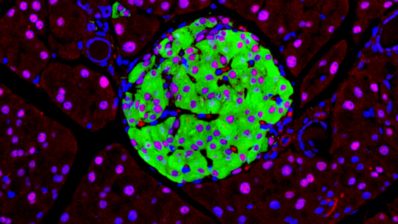Monomeric β-amyloid peptide is secreted by all cells in the body, with the brain being where it is produced most. Although its precise function is still unknown, a recent collaboration between several labs from the Department of Medicine and Life Sciences at Pompeu Fabra University (MELIS-UPF) shows how its function changes over the years, going from activating the sugar uptake by neurons, to inhibit it.
The research team has worked with human cell cultures and prepared a computational analysis that mimics the physiological and pathological functioning of the peptide. This has allowed them to see that, over time, the β-amyloid peptide aggregates from a monomeric to an oligomeric configuration. This new beta-sheet conformation, typical of Alzheimer’s, is capable of blocking the insulin receptor of neurons, preventing them from obtaining the glucose needed to function.
“During the early stages of Alzheimer’s, a reduction in the metabolic activity of neurons and in glucose uptake is seen”
Francisco Muñoz, MELIS-UPF
Thus, the study points out that the accumulation of β-amyloid, which causes Alzheimer’s disease, in turn produces insulin resistance, damaging neuronal metabolism. “Studying drugs that are already used successfully for the treatment of type 2 diabetes could be useful for the treatment of Alzheimer’s disease”, adds Francisco Muñoz, researcher at MELIS-UPF and senior author of the article.
Rubén Molina-Fernández, Pol Picón-Pagès, Alejandro Barranco-Almohalla, Giulia Crepin, Víctor Herrera-Fernández, Anna García-Elías, Hugo Fanlo-Ucar, Xavier Fernàndez-Busquets, Jordi García-Ojalvo, Baldomero Oliva, Francisco J Muñoz, Differential regulation of insulin signalling by monomeric and oligomeric amyloid beta-peptide, Brain Communications, Volume 4, Issue 5, 2022, fcac243, doi.org:10.1093/braincomms/fcac243.







